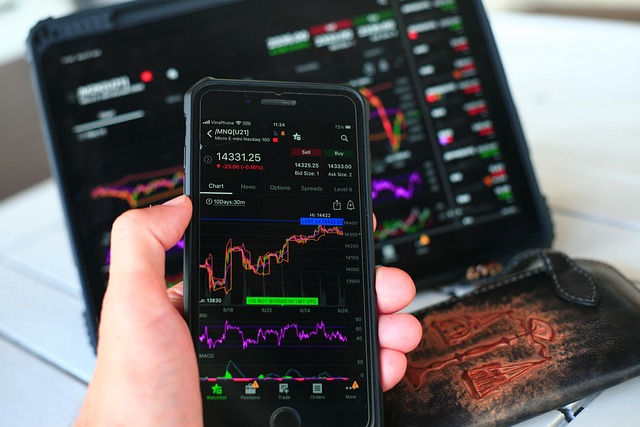Is Stock Market Trading Profitable? An In-Depth Analysis
Author: Jameson Richman Expert
Published On: 2025-08-12
Prepared by Jameson Richman and our team of experts with over a decade of experience in cryptocurrency and digital asset analysis. Learn more about us.
The question of whether stock market trading is truly profitable has been a longstanding topic of debate among investors, financial analysts, and aspiring traders. While some tout trading as a pathway to rapid wealth accumulation, others highlight the significant risks, volatility, and emotional toll involved. The reality is far more nuanced: profitability depends on a complex blend of strategic planning, disciplined execution, market expertise, psychological resilience, and continuous adaptation. Having spent years navigating this challenging environment, I can affirm that stock market trading can indeed be profitable — but only when approached with a comprehensive understanding, stringent risk management, and a mindset oriented toward lifelong learning. This article aims to delve deeply into the crucial factors that influence trading success, share personal insights, and offer practical guidance to help you evaluate whether trading aligns with your financial goals.

Understanding the Fundamentals of Stock Market Trading
Before considering potential profits, it’s vital to comprehend what stock market trading entails. At its core, trading involves actively buying and selling shares of publicly listed companies through stock exchanges such as the New York Stock Exchange (NYSE), NASDAQ, London Stock Exchange (LSE), or others worldwide. The primary objective is to capitalize on price fluctuations—buying at lower prices and selling at higher ones. However, markets are driven by a multitude of interconnected factors including macroeconomic indicators, corporate earnings reports, geopolitical events, central bank policies, and global economic trends.
Early on, I was overwhelmed by the sheer volume of data, complex jargon, and the rapid pace at which prices moved. My initial mistakes—such as impulsively trading based on rumors or social media hype—highlighted the importance of structured, disciplined learning. Over time, I learned that success hinges on mastering both technical analysis, which involves interpreting chart patterns, indicators like RSI, MACD, Fibonacci retracements, and volume analysis, and fundamental analysis—evaluating earnings reports, industry health, economic data, and geopolitical developments. The synergy of these approaches allows traders to identify high-probability setups, optimize timing, and implement effective risk controls, all of which are critical for sustained profitability.
Lessons from Early Failures: Mistakes and Their Lessons
My trading journey was marked by numerous mistakes, each serving as a vital learning experience. One common error was impulsive trading driven by hype and emotion. For example, jumping into a trending tech IPO during a hype cycle, only to witness its value plummet shortly afterward, underscored the importance of thorough due diligence and skepticism towards social media-driven narratives. It became apparent that relying solely on news or social sentiment without fundamental verification can lead to significant losses. Patience, research, and maintaining a calm, analytical mindset are essential.
Another key lesson was overtrading, which I initially believed would increase my chances of profit. In reality, overtrading escalates transaction costs, exposes traders to unnecessary risk, and diminishes focus. I learned that disciplined patience—waiting for high-quality setups, adhering strictly to predefined trading plans, and avoiding impulsive decisions—was far more effective. Additionally, implementing rigorous risk management techniques, such as setting stop-loss and take-profit levels, and carefully sizing positions relative to overall portfolio, transformed my approach from reckless speculation into a disciplined pursuit of consistent gains. These experiences reinforced that emotional control, discipline, and strategic planning are the hallmarks of successful traders—not sheer trading volume.
Adopting a Profitable Trading Strategy
Achieving consistent profitability requires the adoption of a systematic and disciplined trading strategy. I integrated technical analysis tools such as moving averages, Fibonacci retracements, Bollinger Bands, RSI, and MACD to pinpoint optimal entry and exit points. For instance, a moving average crossover often signals a trend reversal, enabling me to time entries more effectively. These indicators help filter out market noise, enhance decision-making, and improve the odds of successful trades.
Simultaneously, fundamental analysis—monitoring earnings reports, macroeconomic indicators, industry trends, and geopolitical developments—provides insights into the underlying health and long-term prospects of assets. Combining these analytical methods creates a robust framework for decision-making. In addition, strict risk management is crucial: employing stop-loss orders to limit downside, defining position sizes based on a percentage of total capital, and diversifying across sectors and asset classes all serve to mitigate risk and smooth returns.
Advances in technology have revolutionized trading efficiency. Platforms like Binance, MEXC, BitGet, and Bybit now offer automation features—trading bots, algorithmic strategies, and API integrations—that execute trades based on preset criteria. These tools help minimize emotional biases and human errors, especially in high-frequency trading environments. For example, detailed resources such as How OKX Trading Bot Enhances Crypto Trading demonstrate how automation can significantly boost consistency and speed, allowing traders to capitalize on fleeting opportunities with greater precision.

The Expanding Universe: Cryptocurrency and Its Impact on Trading Profitability
The rapid expansion of cryptocurrencies has fundamentally transformed the trading landscape, creating opportunities beyond traditional stocks. Crypto markets operate 24/7, enabling continuous trading sessions that can be advantageous but also pose unique challenges—such as extreme volatility, market manipulation, hacking risks, and complex regulatory environments. Major platforms like Binance, MEXC, BitGet, and Bybit host a wide array of tokens—including Bitcoin, Ethereum, DeFi coins, and derivatives such as futures and options—providing traders with diverse avenues for diversification and leverage.
Crypto trading demands a nuanced understanding of market dynamics. Its high volatility can lead to rapid gains or catastrophic losses within seconds. Security is paramount—using reputable exchanges with robust security protocols, employing cold storage wallets, and enabling multi-factor authentication are non-negotiable practices. Moreover, understanding the influence of social sentiment, news cycles, macroeconomic factors, and evolving regulatory landscapes is critical. Tools such as order book analysis, sentiment scanning, and automated trading systems are invaluable in navigating this environment effectively. Educational resources, demo accounts, and active trading communities on these platforms serve as crucial support systems for traders seeking sustainable profitability in crypto markets.
Is Stock Market Trading Truly Profitable? Myths vs. Reality
The fundamental question remains: can you reliably make money trading stocks? The answer is yes—many professional traders and institutional investors generate substantial profits through disciplined strategies, rigorous analysis, and advanced tools. However, markets are inherently uncertain; losses are an inseparable part of trading. Recognizing this duality is essential for maintaining a realistic outlook and avoiding overly optimistic or unrealistic expectations.
Research from credible sources, such as Bitcoin Bottom Out in 2025, emphasizes understanding market cycles, macroeconomic trends, and geopolitical influences. Successful traders often leverage automation—trading bots, signal services, and algorithmic systems—to execute trades efficiently and remove emotional biases, as explained in How OKX Trading Bot Enhances Crypto Trading.
Nevertheless, unpredictable events—such as economic crises, geopolitical conflicts, or regulatory crackdowns—can cause abrupt market shocks leading to losses, sometimes sizable. The key to sustainable profitability lies in managing expectations, continuously refining strategies, practicing rigorous risk controls, and developing mental resilience. Patience, emotional discipline, and a commitment to ongoing education distinguish traders who thrive amid market chaos from those who succumb to it.
Final Reflections and Practical Recommendations
In conclusion, stock market trading can indeed be profitable, but it is far from a get-rich-quick scheme. Success requires building a solid knowledge base, honing emotional discipline, developing comprehensive and adaptable strategies, and maintaining stringent risk management protocols. My personal experience has shown that setbacks are an inherent part of the learning process; perseverance, disciplined practice, and continuous education are vital for transforming initial failures into long-term gains.
For aspiring traders, leveraging reputable educational resources, advanced trading platforms, and automation tools is essential. Leading platforms like Binance, MEXC, BitGet, and Bybit offer not only execution capabilities but also extensive learning materials, community support, and analytical tools. Deepening your understanding with detailed analyses—such as Bitcoin Bottom Out in 2025—can help decode market cycles and inform smarter decisions.
Remember, trading is a marathon, not a sprint. Embrace the challenges, stay disciplined, pursue continuous learning, and always prioritize risk controls. With patience, strategic rigor, and resilience, profitability in both stock and crypto markets is an achievable goal for dedicated traders committed to disciplined practice.